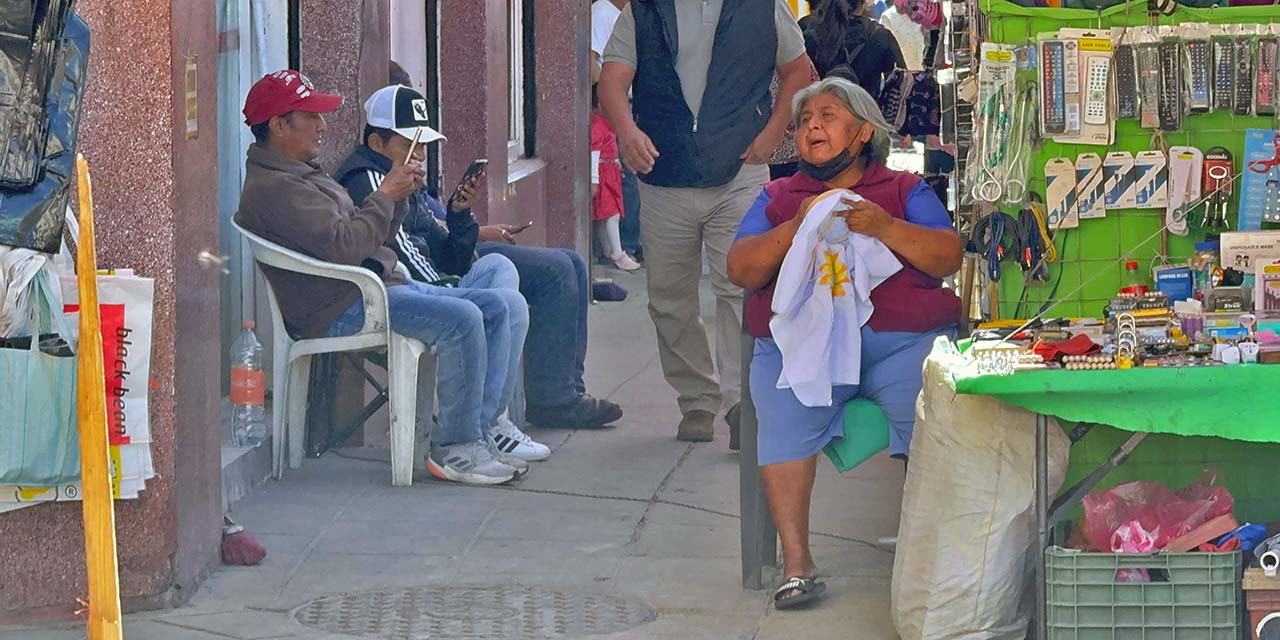
Street vendors in the capital continue to occupy spaces in the city in an anarchic manner, hindering mobility and increasingly taking over sidewalks and pedestrian crossings with impunity; in some areas of the city they are pointed out as part of the insecurity that prevails in the streets.
This problem has overwhelmed the capacity of the municipal authorities, who have been unable to regulate the situation. Now, even pedestrian crossings and ramps for people with disabilities have been invaded, putting the safety of citizens at risk.
On many sidewalks in the city, on corners it is possible to find a tarp that prevents passage, a rope tied to a post or facade to place objects or to, equally, prevent the passage of pedestrians.
A citizen complaint sent to the editorial office of EL IMPARCIAL in Oaxaca indicated that, at the intersection of the Central de Abasto, a fruit vendor not only occupies part of the sidewalk, but has also taken over a section of Las Casas Street, which remains closed for the installation of stalls, while work is being done inside the market. These obstacles force pedestrians to go down to the vehicle lane, or to the sidewalk, sometimes under the impassive gaze of police officers or with their complicity.
Without the slightest shame, those in charge of a business place advertisements on the sidewalk, obstructing the passage of pedestrians.
In addition, in this same area, a manhole with an incomplete cover represents an additional danger for pedestrians who could fall into it, get injured or be the victim of an accident.
During the tour conducted by El Mejor Diario de Oaxaca, it was confirmed that in areas around the Central de Abasto and the Historic Center, street vendors place their carts, chairs and signs in a reckless manner in spaces designed for the safe transit of people. This includes ramps and sidewalks intended for people with disabilities, exposing themselves to possible accidents.
Another area with this type of damage is the Historic Center, in the surroundings of the Benito Juárez and 20 de Noviembre markets, places that even established businesses occupy to place their advertisements and place them on the sidewalk without any restriction and much less with impediment from the authority.
While motorists face economic sanctions if they block pedestrian access, there is no clear regulation that punishes street vendors for these practices. This lack of regulations leaves pedestrians in a situation of constant vulnerability.
The danger is also on the ground with structures not removed and that represent a threat of tripping.
Added to this is what previous administrations have pointed out, that many of these street vendors park their vehicles next to their stalls for hours or entire days.
The situation is aggravated by the existence of other obstacles in the streets, such as manholes in poor condition, damaged sewers and unprotected light fixture bases, problems that should be addressed by municipal authorities.
Although civil society organizations have intervened to address these defects with their own resources, their efforts are not sufficient to resolve a problem that requires a comprehensive and in-depth solution.
Given this situation, citizens are caught in the middle of the conflict because they do not receive attention from municipal authorities to guarantee security and free transit in public spaces, as well as regulations that put order to informal commerce in the city.
Source: imparcialoaxaca






